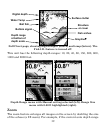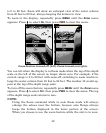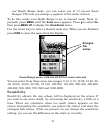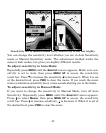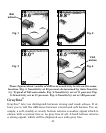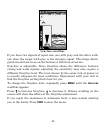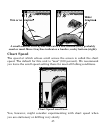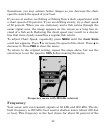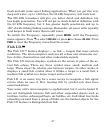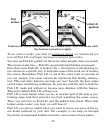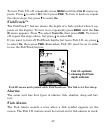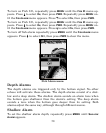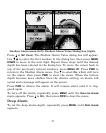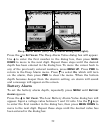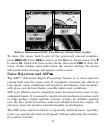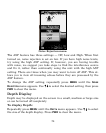47
fresh and salt water sport fishing applications. When you get into very
deep salt water, up to 1,000 feet, the 83 kHz frequency will work best.
The 200 kHz transducer will give you better detail and definition, but
less depth penetration. You will not get as much detail or definition with
the 83 kHz frequency, but it has greater depth penetration and up to
120° of wide fishing finding coverage. Remember, all sonar units typically
read deeper in fresh water than in salt water.
To switch the Frequency, repeatedly press
MENU until the Frequency
menu appears. Press ↑ to select
200 KHZ or press ↓ to choose 83 KHZ. Press
PWR to clear the Frequency menu from the screen.
Fish I.D.™
The Fish I.D.™ feature displays — as fish — targets that meet certain
conditions. The microcomputer analyzes all echoes and eliminates sur-
face clutter, thermoclines and other undesirable signals.
The Fish I.D. feature displays symbols on the screen in place of the ac-
tual fish echoes. There are three symbol sizes: small, medium and
large. These show the relative size between targets. In other words, it
displays a small fish symbol when it thinks a target is a small fish, a
medium fish symbol on a larger target and so forth.
Fish I.D. is an easier way for a sonar novice to recognize a fish signal
return when he sees it. But, locating fish by symbol only does have
some limitations.
Your sonar unit's microcomputer is sophisticated, but it can be fooled. It
can not distinguish between fish and other suspended objects such as
trotlines, turtles, submerged floats, air bubbles, etc. Individual tree limbs
extending outward from a group of limbs are the hardest objects for the
Fish I.D. feature to distinguish from fish.



